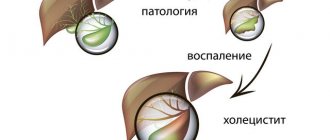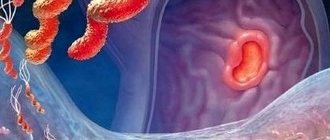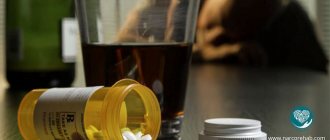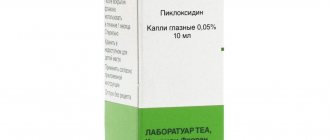Pharmacological properties
Pharmacodynamics.
Otilonium bromide is a typical representative of a class of drugs based on the quaternary salt of 2-aminoethyl-n-benzylaminobenzoate. Otilonium bromide has an antispasmodic effect on the smooth muscles of the distal intestine (colon and rectum). This effect is observed when using doses that do not affect gastric secretion and do not cause typical atropine-like side effects.
Mechanism of action. Otilonium bromide acts primarily by changing the flow of Ca2+ ions between the intracellular and extracellular spaces, reducing the trigger factor for contractile activity. Otilonium bromide inhibits the opening of L-type calcium channels and the penetration of Ca2+ ions into intestinal smooth muscle. An additional pharmacodynamic effect is achieved by inhibiting tachykinin and muscarinic receptors.
Clinical efficacy and safety. An extension analysis of a double-blind, placebo-controlled, 15-week study of otilonium bromide (SpC1M study) conducted in 378 patients with irritable bowel syndrome (IBS) showed that the response rate at 2 to 4 months was significantly higher in the otilonium bromide group (36.9%) compared to the placebo group (22.5%; p=0.007). Each month, the response rate was higher in the otilonium bromide group compared with placebo (p0.05). The overall monthly and weekly proportion of the population with a therapeutic response for individual endpoints (intensity and frequency of pain and discomfort, flatulence/bloating, severity of diarrhea and constipation, mucus in the stool) was significantly higher in the otilonium bromide group compared with the placebo group with range of differences from 10 to 20%. Analysis of the results of defecation frequency and stool consistency indicates that there is an additional benefit in patients with diarrhea. Safety data for otilonium bromide are similar to placebo.
A double-blind, placebo-controlled clinical trial (n=365 patients with IBS) (OBIS study) confirmed the effectiveness of otilonium bromide compared with placebo in reducing the incidence of abdominal pain, the degree of bloating and preventing recurrence of symptoms.
Pharmacokinetics. It is assumed that otilonium bromide penetrates the site of pharmacological action through the intestinal wall, since systemic absorption of the drug after oral administration is very low (3%). Therefore, its concentration in blood plasma is low. After oral administration, a high distribution of the drug in the smooth muscles of the colon and rectum has been described. The use of the drug shortly before meals ensures pharmacologically effective local bioavailability of the drug at the site of therapeutic action and while waiting for the most pronounced symptoms of the disease. The use of otilonium bromide in patients with impaired renal and hepatic function has not been studied. Since otilonium bromide enters the systemic circulation in extremely small quantities, deterioration of kidney and liver function is not expected.
Preclinical safety data
Acute toxicity: No fatalities have been reported with oral administration in dogs at doses up to 1000 mg/kg, and with oral administration in rats the DL50 was 1500 mg/kg.
Chronic toxicity: when otilonium bromide was administered at a dose of 80 mg/kg for 180 days, no hematological or histological abnormalities were observed in animals.
Embryotoxicity: no embryotoxic or teratogenic effects were observed at doses up to 60 mg/kg in rats and rabbits.
Genotoxicity: Standard in vitro and in vivo clinical tests have not revealed any mutagenic potential of otilonium bromide.
Indications
Symptomatic treatment of urinary syndrome and cramping pain of the distal intestine (colon and rectum), reduction of abdominal pain, bloating and impaired motility caused by spasm of smooth muscles of the distal intestine in patients aged ≥18 years.
Treatment of IBS should begin with non-pharmacological measures (lifestyle changes, diet, emotional support, psychotherapy), pharmacotherapy is prescribed when such measures do not have the desired effect.
Reviews
In reviews of Spazmomen tablets, consumers in 80% of cases talk about the high effectiveness of the drug. It relieves spasm and pain in a period of several minutes to half an hour - such evidence is found in every second review.
There is no information in the reviews about cases of intolerance or allergy to the medicine. Doctors are also pleased with the effect of Spasmomen, as it helps relieve unpleasant symptoms without having a negative effect on internal organs.
More detailed reviews can be read at the end of the article. There, readers of our portal can share their impressions of the drug. Fill out a simple form to have it appear in the reviews section.
Application
Mode of application. The tablets should be swallowed whole with a glass of water. It is advisable to take the tablets 20 minutes before meals.
Doses. The recommended single dose is 1 tablet of 40 mg, the recommended daily dose is 80–120 mg (1 tablet 2–3 times a day). The dose depends on the clinical picture and response to treatment, the drug should be prescribed in accordance with the therapeutic guidelines for the treatment of IBS.
The duration of treatment depends on the course of the disease. Clinicians should periodically evaluate the need for continued therapy.
Special patient groups
Patients with impaired liver and kidney function. No change in the dose of the drug is required (see Pharmacokinetics for details).
Elderly patients. No change in the dose of the drug is required.
Children. Clinical data on the use of the drug in patients under 18 years of age are limited, therefore it is not intended for use in children.
Spasmomen tablets p/o 40 mg No. 10x3
Name
Spasmomen table. p/o 40 mg per bl. in pack №10x3
Description
SPAZMOMEN® tablets contain a medicinal substance called otilonium bromide. It belongs to a group of drugs called antispasmodics. SPASMOMEN® acts on the muscles of the large intestine, reducing its excessive contractile activity and the frequency of these contractions. Thus, the drug reduces intestinal spasms and regulates its excessive motor activity. SPAZMOMEN® is used to treat patients over 18 years of age with irritable bowel syndrome, characterized by painful intestinal spasms, bloating and impaired mobility.
Main active ingredient
Otilonium bromide
Release form
SPAZMOMEN® is a round, biconvex, film-coated tablet, white to almost white in color. Folding cardboard box. Blister packaging made of aluminum, PVC and PVDC, opacified with titanium dioxide. 30 film-coated tablets (3 blisters of 10 film-coated tablets) with leaflet in each package.
Indications for use
SPAZMOMEN® is used to treat patients over 18 years of age with irritable bowel syndrome, characterized by painful intestinal spasms, bloating and impaired mobility.
Directions for use and doses
Always take this medication exactly as directed by your doctor. If you have any doubts, consult your doctor or pharmacist. Adults and elderly patients: 1 tablet 2-3 times a day as prescribed by a doctor. The tablets should be swallowed whole with water, preferably 20 minutes before meals. Do not break, chew or crush the tablets. Use in children and adolescents These tablets are not suitable for use in children and adolescents under 18 years of age. If you have exceeded the recommended dose of the drug Spasmomen® If you exceed the dose of the drug Spasmomen®, no undesirable effects are expected. However, if you have taken more than the recommended dose and feel unwell, tell your doctor or go to an emergency room with this leaflet and/or package with you. If you forget to take Spasmomen® If you forget to take Spasmomen® on time, take the missed dose as soon as you remember. In any case, DO NOT take a double dose to make up for a missed dose. If you have any additional questions about using this medicine, ask your doctor or pharmacist.
Use during pregnancy and lactation
If you are pregnant or breastfeeding, or if you may or may become pregnant, consult your doctor or pharmacist before using any medicine. SPAZMOMEN® should not be used during pregnancy or breastfeeding, unless the doctor considers taking the medicine necessary and you are under his/her supervision.
Precautionary measures
Before taking SPAZMOMEN®, consult your doctor or pharmacist: - If you have high intraocular pressure (glaucoma) - If you have an enlarged prostate gland (also called prostate hypertrophy), - If you have pyloric stenosis (a disease of the gastrointestinal tract characterized by a narrowing of the opening leading from the stomach to the duodenum). The drug SPAZMOMEN® contains lactose, which is a type of sugar (milk sugar). If your doctor has told you that you have an intolerance to certain types of sugar, consult with him or her before starting to take this medicine.
Interaction with other drugs
If you are currently taking, have recently taken, or may have taken any other medications, including those taken without a prescription, tell your doctor or pharmacist. The effect of the drug SPAZMOMEN® on the activity of other drugs is unknown. It is advisable to take the drug Spasmomen ® together with food and drinks 20 minutes before meals.
Contraindications
- if you are allergic to otilonium bromide or any other component of this medicinal product (listed in the “Composition” section).
Compound
— The active ingredient is otilonium bromide (40 mg per film-coated tablet). — Other components are: rice starch, lactose monohydrate (EP-D80), sodium starch glycolate A, magnesium stearate, hypromellose Methocel E 5, titanium dioxide (CI 77891, E171), macrogol, talc.
Side effect
Like all medicines, this medicine can cause side effects, although not everyone gets them. STOP taking this medicine and get medical help right away if you have any of the following signs of an allergic reaction: - difficulty breathing or swallowing, swelling of your face, lips, tongue or throat; - severe itching or soreness of the skin with redness, rash and swelling. Side effects that occur infrequently (may occur in 1 in 100 patients) that you may experience while taking the drug SPAZMOMEN®: - gastrointestinal disorders, such as dry mouth, nausea and pain in the upper abdomen; - skin itching and redness of the skin; - weakness and asthenia; - headache and dizziness; Isolated cases of allergic skin reactions such as rash (urticaria) and swelling of the deep layers of the skin, especially around the lips, eyes, genitals, hands, feet, throat, or tongue have been reported in patients taking this drug. In some cases, sudden difficulty breathing (angioedema) may occur. Reports of side effects If any side effects occur, contact your doctor or pharmacist. This applies to any possible side effects, including those not described in this leaflet. By reporting side effects, you can help provide more information about the safety of this medicine.
Storage conditions
This medicine should be kept out of the reach of children. This medicine should not be used after the expiration date, which is indicated on the outer carton and blister after the words “best before”. The expiration date refers to the last day of the indicated month. Do not throw any medicines down the drain or with household waste. Consult your pharmacist about how to discard any unwanted medicine. These measures help protect the environment. Store at a temperature not exceeding 30°C! Shelf life: 3 years.
Side effects
In clinical studies, the drug spasmomen was well tolerated; A small number of adverse reactions were reported and were similar in nature to those observed with placebo/reference medicinal product (see table).
The frequency of adverse reactions in patients taking otilonium bromide can be classified as follows: often (≥1/100 to 1/10), uncommon (≥1/1000 to 1/100), rare (≥1/10,000 to 1/1000).
Table. Adverse reactions recorded during clinical trials
| From the gastrointestinal tract | Uncommon: dry mouth, nausea, pain in the upper abdomen |
| From the skin and subcutaneous tissues | Uncommon: itching, erythema |
| General and administration site disorders | Uncommon: weakness, asthenia |
| From the nervous system | Uncommon: headache |
| From the organ of hearing and labyrinth | Uncommon: dizziness |
During post-marketing studies, isolated cases of skin hypersensitivity reactions (urticaria, angioedema) were reported. Such cases have been reported voluntarily in a population of uncertain size, making it impossible to reliably estimate their frequency and therefore it is unknown.
Reports of suspected adverse reactions. Reporting suspected adverse reactions after drug registration plays an important role. This allows continued monitoring of the benefit/risk ratio of the drug.
Health care workers should report any suspected adverse reactions through the national reporting system.
Analogs
Spasmomen has many analogues, since the pharmaceutical industry produces many drugs with antispasmodic properties. The following medications are closest in their effect to this drug:
- Papazol;
- Bellasthesin;
- No-Shpa;
- Papaverine;
- Drotaverine;
- Besalol.
Due to the fact that the listed analogs include a different list of components, they may have a different list of indications and contraindications from Spasmomen, and may also actively engage in drug interactions.
special instructions
The drug should be used with caution in glaucoma, prostatic hypertrophy and pyloric stenosis.
The drug contains lactose, so it is contraindicated in patients with lactase deficiency, galactosemia or glucose-galactose malabsorption syndrome.
Use during pregnancy and lactation. There are no clinical data on the use of the drug Spasmomen during pregnancy and lactation. During animal studies, Spasmomen did not have embryotoxic, teratogenic or mutagenic effects, and did not exhibit reproductive or developmental toxicity. However, like all medicines, it can be used during pregnancy and lactation only if absolutely necessary and under close medical supervision.
The ability to influence reaction speed when driving vehicles or working with other mechanisms. Spasmomen does not affect or has an extremely insignificant effect on the reaction speed when driving vehicles or other mechanisms.
Price
The drug Spazmomen in Russia and Ukraine does not belong to the cheap category, as it is produced in Germany. Meanwhile, the price of these tablets is quite affordable for average-income consumers
Cost in Russia
In Russian pharmacies, Spazmomen tablets can be purchased at a cost of 420 to 670 rubles per pack of 30 tablets.
Cost in Ukraine
In Ukrainian pharmacies Spazmomen can be purchased at prices ranging from 119 to 135 hryvnia for 30 tablets.
Video on the topic: How to cure flatulence?
Note!
Description of the drug Spasmomen table. p/o 40 mg No. 30 on this page is a simplified author’s version of the apteka911 website, created on the basis of the instructions for use.
Before purchasing or using the drug, you should consult your doctor and read the manufacturer's original instructions (attached to each package of the drug). Information about the drug is provided for informational purposes only and should not be used as a guide to self-medication. Only a doctor can decide to prescribe the drug, as well as determine the dose and methods of its use.






